The Strollers' Lane and Tannery Bridges
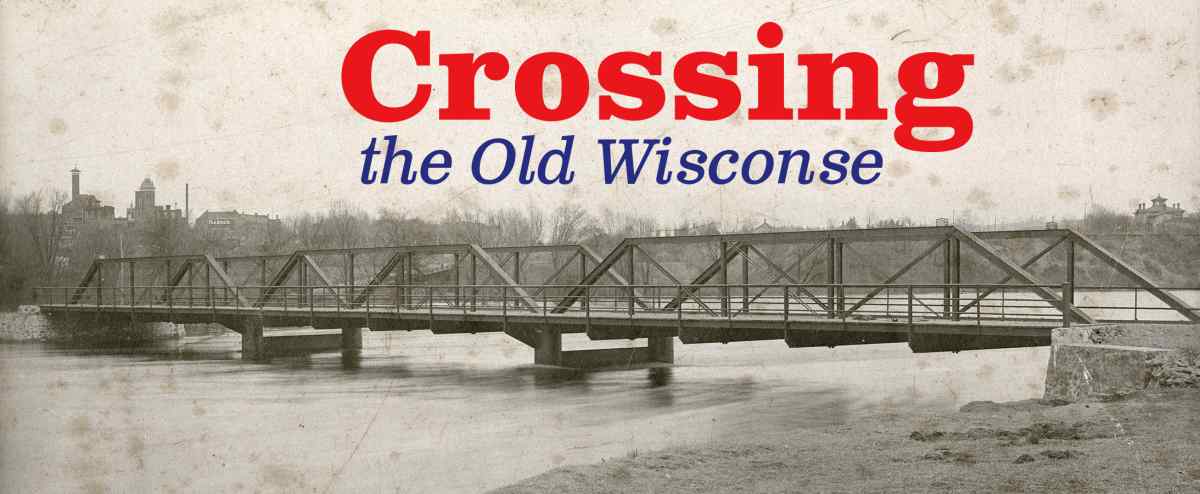
Wausau’s Tannery and Strollers’ Bridges are two of the most confusing and often misidentified bridges in Marathon County. Serving what is today Thomas Street, the two bridges were built within weeks of one another to cross a very different Wisconsin River from the one we know today. Their stories have become inseparably linked in the modern collective consciousness and some may even be unaware that there were ever two bridges at this location to begin with. Despite this, the two bridges have very different histories that become much clearer once the proper historical framework is laid out.
A Very Different River
To fully understand the story of these bridges one must first understand the river which they crossed. Until roughly 1951 Oak Island Park was an island.1 The Wisconsin River split into two channels in that area; the main channel was more or less where it is today but a small backwater or “slough” ran around the back of Oak Island Park separating it from Hammond Park and the mainland on the Eastern bank. The location was a logical one for a river crossing. A bridge to serve Southern Wausau, as well as the communities of Schofield and Rothschild, was sorely needed. Wausau already had a crossing at its far northern extent in the form of the Leahy Beebe Bridge and downtown was well served by a series of bridges on Clark’s Island. To the south, however, there was nothing until Mosinee. The Oak Island location was also particularly attractive because, with the island in the center of the river, two small, relatively inexpensive bridges could be built over the channels, and a road laid on the island between them, eliminating a good portion of what otherwise would have to have been costly, maintenance-heavy bridgework. In January 1904, the City of Wausau issued contracts for the construction of a pair of bridges at Oak Island. The Strollers’ Bridge, as it came to be known, was to run between the West Bank and Oak Island and was to be built by Hennepin Bridge Company. The larger Tannery Bridge between Oak Island and the Western Bank was to be erected by the Wisconsin Bridge Company. Both bridges were completed by February 1905.2
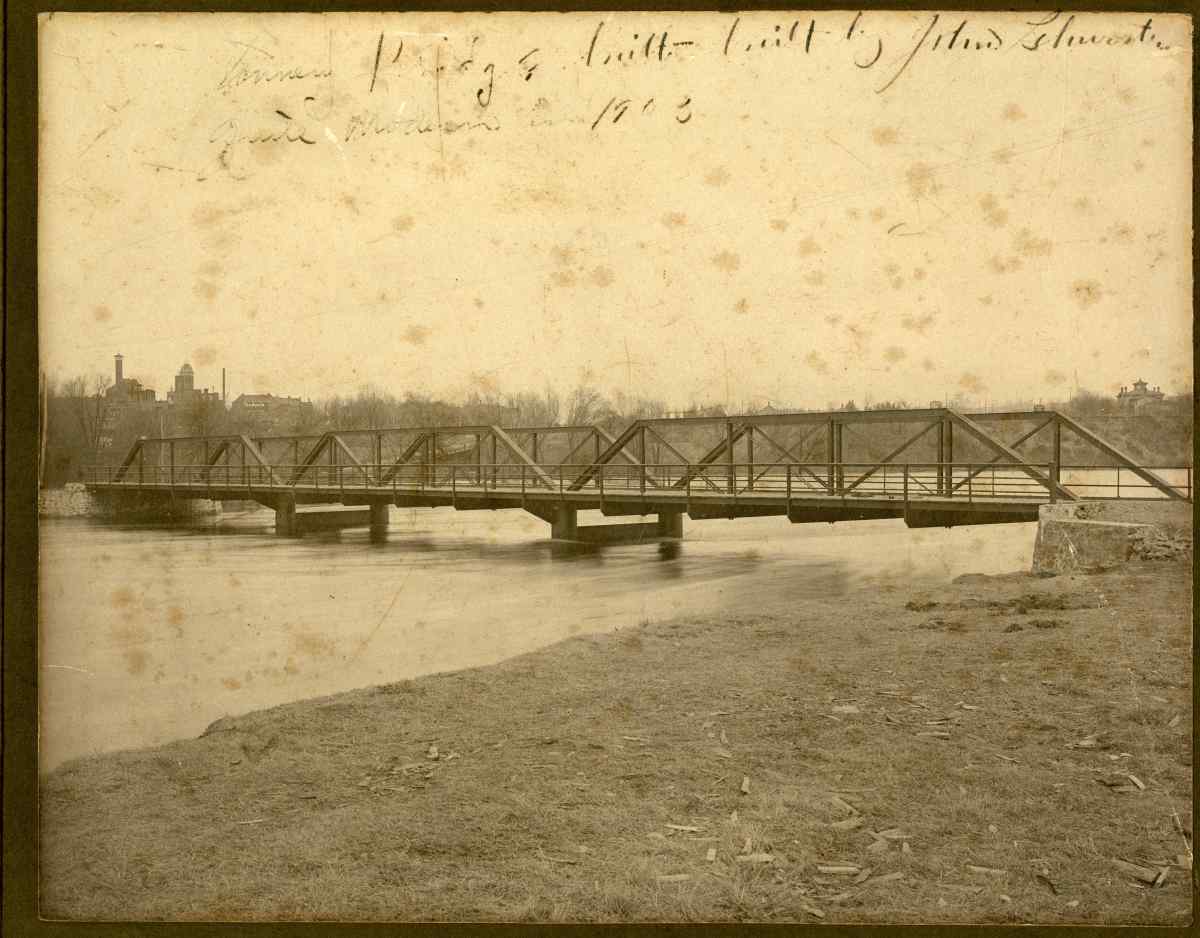
The Tannery Bridge as it first appeared, a small three span pony truss just above the surface of the river.
Credit: MCHS Photo Collection
What's in a Name?
The choice of names for the bridges is interesting in itself. The name Tannery Bridge is more or less self-explanatory. Since 18963 there had been a tannery on the West Bank of the Wisconsin River, near what is now Edwards Street.4 Since the bridge was directly adjacent to the facility the name, while unofficial, simply fell into place. The name Strollers’ Bridge is a bit more of a mystery. If the bridge was officially named “Strollers’ Bridge” no one seems to have bothered to record the reason why. In all likelihood though, the name came from the pleasant stroll to Oak Island Park that the bridge offered.
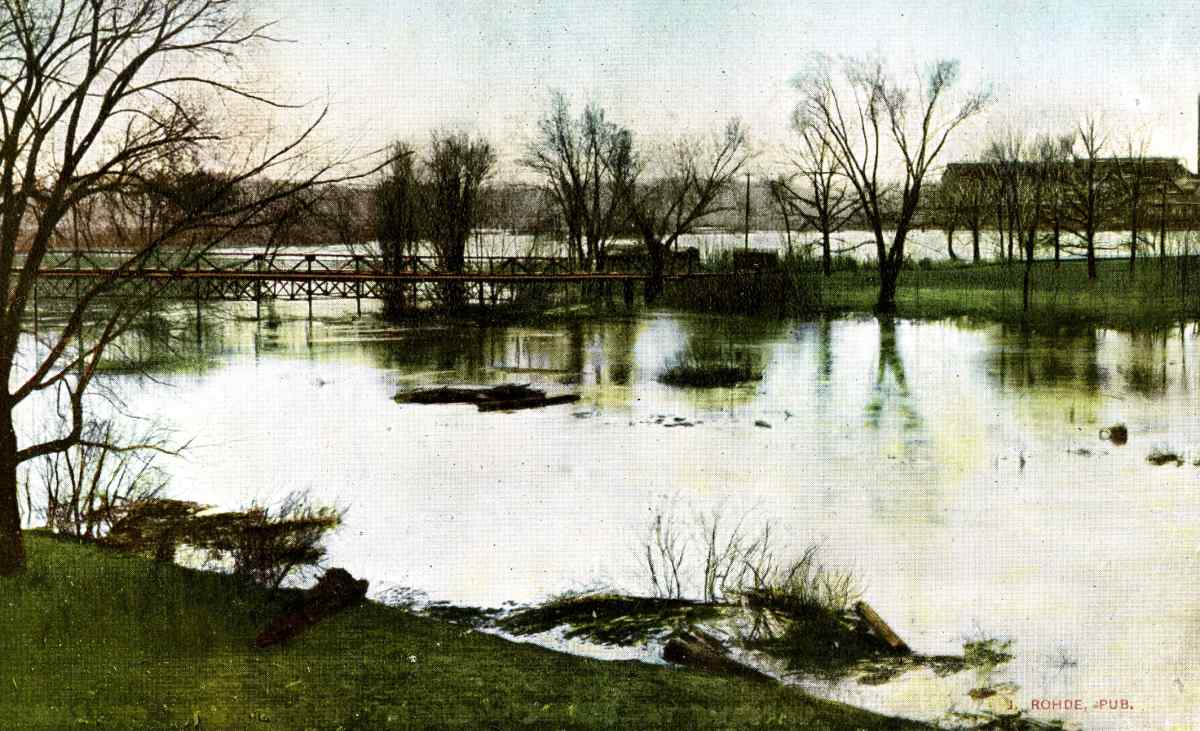
Strollers' Bridge was what is known as a "Deck Truss Bridge" with the road supported on top of the superstructure
as opposed to running through it.
Credit: MCHS Photo Collection
The Flood of 1912
In 1912 The Wisconsin River experienced a catastrophic flood that wreaked havoc on many of Marathon County’s bridges. Two of the three spans of the Tannery Bridge were washed out, ending up almost a mile away near where the Sturgeon Bluff Apartments (Old Memorial Hospital) now stand.5 Meanwhile, Strollers Bridge, somewhat protected from the torrent of the main channel by Oak Island, survived relatively unscathed. A small portion of its west end was compromised, but the damage was described as “not very expensive” and seems to have been quickly repaired.6 By October of 1912, Strollers Bridge was back in service,7 having been repaired by city engineers. The Tannery Bridge would not be ready for use for another three months as it had to be entirely replaced.8 Due to changes to the course of the river, the Tannery Bridge was rebuilt four feet higher and seventy feet longer than its predecessor.9 The construction of the new bridge was handled by Wausau Iron Works for $15,000. Included in the project was the salvage of the single surviving span of the old bridge which was then restored and used to repair the High Bridge which had also been severely damaged by the flood.10
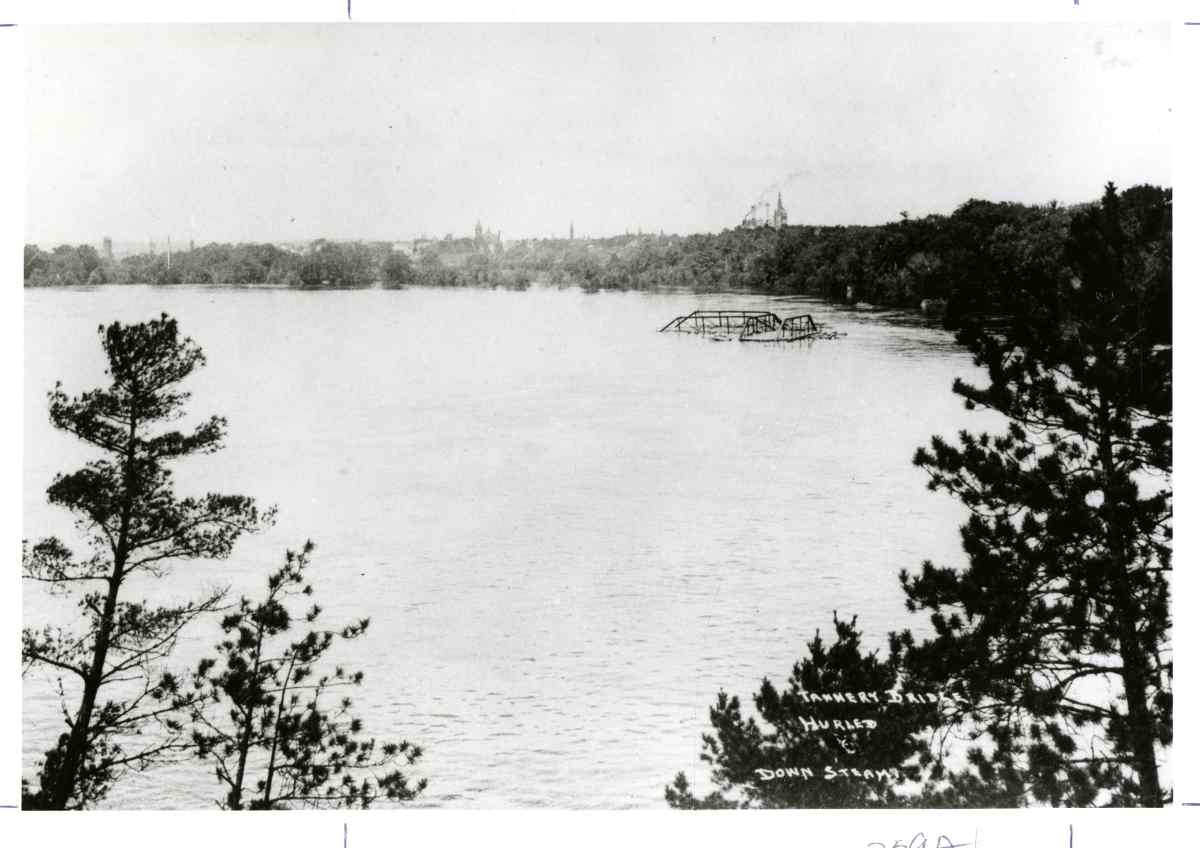
The Tannery Bridge looking a bit worse for wear after being washed out in the 1912 flood.
The Steeple of St. Mary's Church can be seen in the background.
Credit: MCHS Photo Collection
Taming the River
It was not until the 1930s that the bridges again gained public attention. In 1934 Stroller’s Bridge was 30 years old and the rebuilt Tannery Bridge was 22. The bridges were in constant need of maintenance and the consensus was that they would need to be replaced within the next few years. In March 1934 the City Council resolved to have the Committee on Bridges and Viaducts and the Board of Public Works draw up plans for the bridges’ replacements. The Council also moved to have the new bridges built as part of the Public Works Program.11 While funding was applied for, construction was never started. Instead the city contracted with 3M to have waste quartzite trucked to the site at no cost and dumped into the slough beneath Strollers’ lane.12 Between 1935 and 1937, upwards of 75 tons of quartzite was dumped into the slough each day13 eliminating all but a very small channel on the western side of the slough. All but 36 feet of Strollers’ bridge was removed with what remained serving as a glorified culvert over the new narrowed channel.14
The New Tannery Bridge was a Camelback Truss of much sturdier construction than its predecessor.
Credit: MCHS Photo Collection
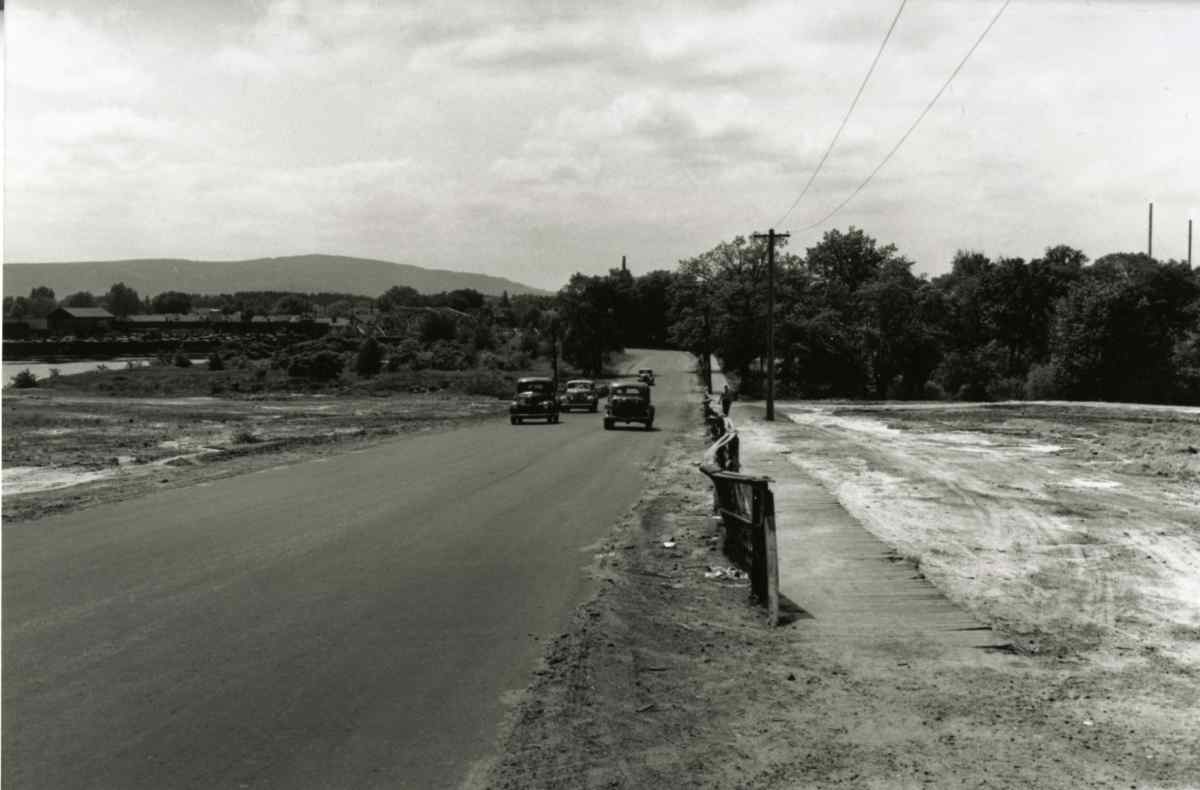
The newly filled Strollers' Lane Circa. 1940.
Credit: MCHS Photo Collection
A New Name for a New Bridge
The Tannery Bridge seems to have escaped the process unscathed, likely because it was far more heavily built and almost a decade newer than its neighbor. The Tannery Bridge would survive a further 14 years before it was ultimately replaced. Though the bridge was originally scheduled for replacement in 1941, WWII put a stop to the plans. It wasn’t until 1951, that the city was able to get permission and funding for its replacement15. The new bridge, built by the L. G. Arnold Company of Eau Claire,16 took into account the changes that had occurred on the river since 1912. With Oak Island no longer an Island and the eastern approach drastically regraded the new bridge oriented in such a way so as to eliminate the tight corners at each end of the bridge. With a new bridge also came a new name. The name “George Stevens Bridge” commemorating Wausau’s founding Father, was selected from among hundreds of entries during the 1951 March of Dimes Drive. Local Arthur H. Hase received a $50 Defense Bond for his winning entry.17 The new bridge was officially dedicated on August 10, 1952 in a fanfare event which included two parades and a formal luncheon at The Hotel Wausau.18 Though most people simply know it as “The Thomas Street Bridge,” it is this very same bridge that continues to serve Wausau to this day, and despite being 71 years old at the time of writing, it doesn’t seem to be going anywhere soon.
The Current Thomas Street Bridge
Credit: MCHS Photo Collection
< Previous Story Glossary Main Index Next Story >
1. “Bridge Relocation Gives Park a Chance to Grow.” Wausau Daily Herald (Wausau), August 4, 1951.
2. “Travel Was Difficult In Marathon County 60 Years Ago.” Wausau Daily Herald (Wausau), December 23, 1909.
3. “Thomas Street bridge has identity of its own.” Wausau Daily Herald (Wausau), October 14, 1990.
4. "Thomas Street bridge has identity of its own"
5. “Wreck And Ruin Along The Wisconsin River.” Wausau Daily Herald (Wausau), July 25, 1912.
6. "Wreck and Ruin"
7. “The Bridges.” Wausau Pilot (Wausau), October 15, 1912.
8. “Tannery Bridge.” Wausau Pilot (Wausau), December 31, 1912.
9. “Work on the Bridges.” Wausau Pilot (Wausau), September 3, 1912.
10. “City Council.” Wausau Pilot (Wausau), August 12, 1912.
11. “Common Council.” Wausau Daily Herald (Wausau), March 8, 1934.
12. “Common Council.” Wausau Daily Herald (Wausau), June 18, 1936
13. “Mining Company to add to Program for Elimination of Dust.” Wausau Daily Herald (Wausau), July 10, 1937.
14. “Common Council.” Wausau Daily Herald (Wausau), October 10, 1936.
15. “Bridge Dedication Festivities Set.” Wausau Daily Herald (Wausau), August 9, 1952.
16. “South Span of Tannery Bridge Comes Down.” Wausau Daily Herald (Wausau), July 10, 1951.
17. “Bridge Dedication.”
18."Bridge Dedication"
